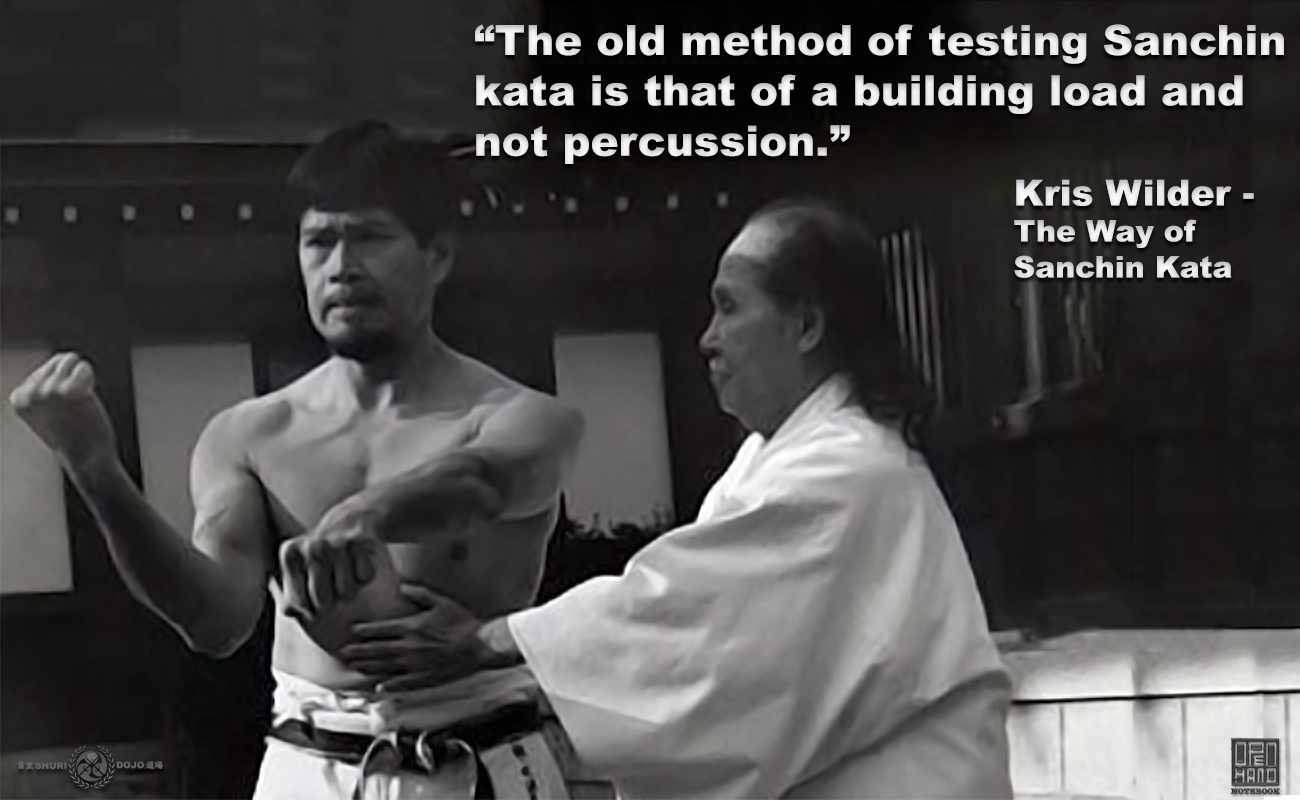
Shime (締め) testing is a two-person drill which serves as a way of testing a practitioner’s ability to apply the strategies and principles of Sanchin kata.
.
The idea behind the testing is to have the practitioner placed under a load, to evaluate their structure.
.
The testing involves putting pressure on the practitioner’s body. The intent is to find the weak spots in the structure. The goal being discovery, so the practitioner can correct a weakness.
.
Striking the practitioner with force, is a modern interpretation. This form of testing is incorrect in its application and also its goal.
.
To gather some perspective around the idea of ‘shime’, let’s take a look at the word. From the verb ‘shimeru’ (締める), “to fasten,” “to tighten”….. therefore ‘shime’ (締め) translates as: to lock, tighten, or shut.
.
Shime is used to judge the practitioner’s ability to lock the body down. This locking down or tightening, shuts off the areas of vulnerability. Furthermore, this locking down also provides a strong platform from which to strike. ‘Shime’ is all about the performer of the kata and little to do with the person doing the testing.
.
The goal in Sanchin testing is to assist in the improvement of the student’s technique and not a display or exhibition. When improvement is the goal then the method of forceful percussive striking is not helpful. It is difficult to analyze and understand the feedback of a forceful percussive strike in any meaningful fashion and is of little value.
.
Excessive slapping, kicking, punching may only constitute 1% of good testing of Sanchin. It looks great – too those that like to show off.
.
The dynamic percussive striking of the practitioner of modern-day Sanchin testing is designed to impress, it is not a pathway to learning. Using percussive striking as a primary means of testing lacks understanding of the goal of ‘shime’ testing.
.
In response to a strike, the practitioner will compress and spring back into place. This method allows no time for subtlety, study, or remediation.
.
The old method of testing Sanchin kata is that of a building load, and not percussion. The testing is about allowing the student to study their body and the teacher aiding the student.
.
The entire process of ‘shime’ for Sanchin kata is about cooperation and study, and not brute force.
.
The level of intensity of testing must be related to the level of training experience. Don’t let your ego lead you to go harder in testing than is necessary.
.
Correction involves watching, verbally correcting, or simply moving or pushing the practitioner into the correct posture. ‘Shime’ grows from simply touching to ensure a muscle group is activated correctly….. to developing resistance to the movements within the Sanchin kata.
.
Sanchin testing should be seen as co-education, not a competition. ![]()
![]()
.
References: Kris Wilder The Way of Sanchin Kata
.
